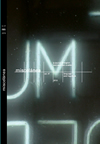Midwinter Spring, The Still Point and Dante. The Aspiration to the Eternal Present in T.S. Eliot's Four Quartets
DOI:
https://doi.org/10.26754/ojs_misc/mj.20138827Palabras clave:
T.S. Eliot, Dante, Cuatro cuartetos, La divina comedia, El punto inmóvil, La primavera en invierno, Poesía, Imaginería, Modernismo, Intertextualidad, Fuentes literariasResumen
La imaginería de Four Quartets, de T. S. Eliot, evidencia una clara influencia de Dante. Entre las imágenes de inspiración dantesca, “el punto inmóvil” y “la primavera en invierno” (trad. Esteban Pujals) expresan el concepto de presente eterno, fundamental en esta secuencia poética. Las oposiciones se neutralizan y “el presente y el pasado se reúnen” en “el punto inmóvil”, el cual guarda relación con la imagen de Dios en el canto XXVIII de Paradiso: un punto de luz cegadora. “La primavera en invierno”, por otra parte, representa un estado de plenitud espiritual, fuera del tiempo y el espacio, y su descripción recuerda las palabras de San Benito en el canto XXII de Paradiso. Las dos imágenes tienen, por tanto, un referente común (un presente eterno, o lo intemporal) y demuestran que Eliot combinó la fascinación por el concepto filosófico del tiempo con su admiración por la poderosa imaginación de Dante.Descargas
Referencias
Ackroyd, Peter. 1984. T.S. Eliot. A Life. New York: Simon & Schuster.
Bellin, Roger. 2007. “The Seduction of Argument and the Danger of Parody in the Four Quartets”. Twentieth-Century Literature 4 (53): 421-441.
Bergonzi, Bernard. 1969. T.S. Eliot: ‘Four Quartets’. Houndmills: Palgrave.
Brooks, Cleanth. (1949) 1968. “The Language of Paradox”. In The Well Wrought Urn. Studies in the Structure of Poetry. London: Dennis Dobson: 01-16.
Dante, Alighieri. 1961a. The Divine Comedy. 1: Inferno. Ed. and trans. J. D. Sinclair. New York: Oxford U.P.
—. 1961b. The Divine Comedy. 2: Purgatorio. Ed. and trans. J. D. Sinclair. New York: Oxford U.P.
—. 1961c. The Divine Comedy. 3: Paradiso. Ed. and trans. J. D. Sinclair. New York: Oxford U.P.
Dickens, David. 1989. Negative Spring. Crisis Imagery in the Works of Brentano, Lenau, Rilke and T.S. Eliot. New York: Peter Lang.
Eliot, T.S. 1974. Collected Poems 1909-1962. London: Faber and Faber.
—. 1932. “Dante”. In Selected Essays 1917-1932. San Diego: Harcourt Brace: 199-237.
—. 1978. “What Dante Means to Me”. In To Criticize the Critic. London: Faber and Faber: 125-135.
Farahbakhsh, Alireza and Zahra Habibi. 2012. “Eliot, Time in Modernist Thought, and Contemporary Reality”. AUMLA: Journal of the Australasian Universities Modern Language Association 117: 35-47.
Howard, Thomas. 2006. Dove Descending. A Journey into T.S. Eliot’s ‘Four Quartets’. San Francisco: Ignatius Press.
Keats, John. 2006. “Ode on a Grecian Urn”. In Greenblatt, S. (ed.) The Norton Anthology of English Literature, vol. 2. New York: Norton: 905-906.
Kobakhidze, Temur. 2011. “Squaring the Circle: Dantesque Aspects of ‘The Point of Intersection of the Timeless with Time’”. In Douglass, P. (ed.) T. S. Eliot, Dante and the Idea of Europe. Newcastle upon Tyne: Cambridge Scholars Publishing: 53-60. Langland, William. 1992. Piers Plowman.
Trans. A. V. C. Schmidt. Oxford: Oxford U.P. —. 1972. The Vision of William Concerning Piers the Plowman. Ed. by W. W. Skeat. London: Oxford U.P.
Longenbach, James. 1994. “‘Mature poets steal’: Eliot’s allusive practice”. In Moody, D. (ed.): 176-188.
Manganiello, Dominic. 1989. T.S. Eliot and Dante. Houndmills/London: MacMillan.
Moody, David. (1979) 1996. Thomas Stearns Eliot: Poet. Cambridge: Cambridge U.P.
—. (ed.) 1994. The Cambridge Companion to T. S. Eliot. Cambridge: Cambridge U.P.
—. 1994. “Four Quartets: Music, Word, Meaning and Value”. In Moody, D. (ed.): 142-157.
Perkins, David. 1969. “Rose-garden to Midwinter Spring: Achieved Faith in the Four Quartets”. In Bergonzi, B. (ed.): 254-259.
Richardson, Alan and John Bowden. 1983. A New Dictionary of Christian Theology. London: SCM.
Ruano, Lucinio (ed.) 1974. Vida y obras de San Juan de la Cruz. Madrid: Editorial Católica.
Rutler, George William. 2006. “Foreword”. In Howard, T.: 7-12.
Schmidt, A. V. C. (1978) 1993. “Introduction”. In Langland, W. The Vision of Piers Plowman. A Complete Edition of the B-Text. London: Everyman: xi-xiii.
Sinclair, John D. 1961. “Note to Canto XXII”. In Dante 1961c: 327-329.
Spears Brooker, Jewell. 1994. Mastery and Escape. T.S. Eliot and the Dialectic of Modernism. Amherst: The University of Massachusetts Press.
Spender, Stephen. 1975. T. S. Eliot. Harmondsworth: Penguin.
Descargas
Publicado
Número
Sección
Licencia

Esta obra está bajo una licencia internacional Creative Commons Atribución-NoComercial 4.0.


